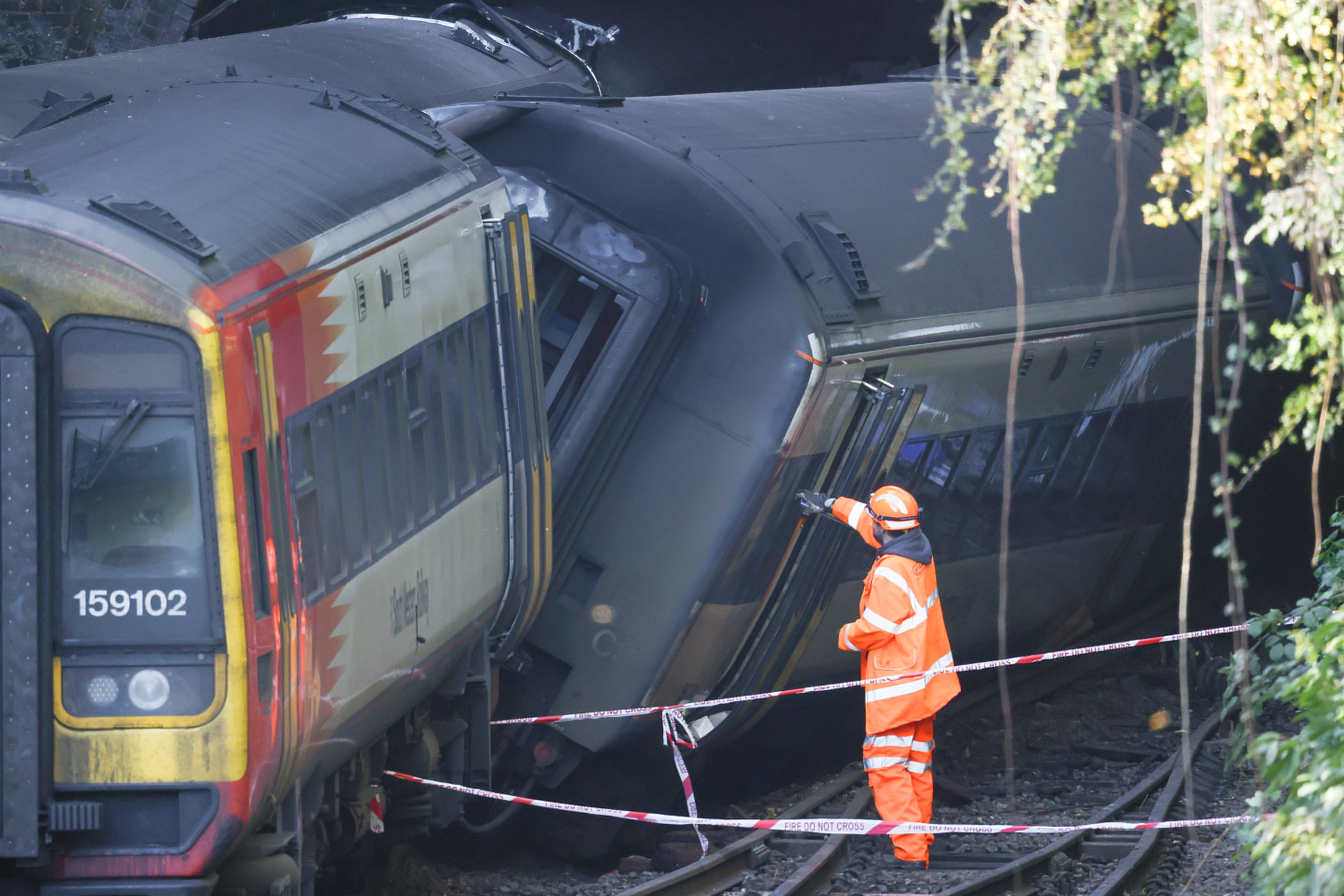Salisbury train crash: Investigation team ‘almost certain’ of cause
South Western train did not stop at red light because its wheels probably slipped on the tracks, investigators said

One of the trains in the Salisbury crash was unable to stop at a red light because it was “almost certainly” affected by “low adhesion between the wheels and the track”, officials have said.
Two trains from the Great Western and South Western railway services collided on Sunday evening leaving a train driver with “life-changing” injuries.
Thirteen people were taken to hospital with minor injuries and a passenger said that a three-week-old baby was rescued from the scene.
As of Monday, only one person remains in hospital and is in a stable condition. The Rail Accident Investigation Branch have said that they are almost certain that “low adhesion” between the train wheels and the track caused the crash.
They said that the South Western service train was required to stop by a red light but couldn’t stop in time because of “wheelslide”. This was despite the train driver applying the brakes.
RAIB deputy chief inspector Andrew Hall said in a statement on Tuesday: “From the initial evidence we have collected, we know that the passage of the Great Western train travelling from Eastleigh across Salisbury tunnel junction was being protected by a red signal.
“At this junction, trains coming from Eastleigh merge with those from Basingstoke, so the South Western service coming from Basingstoke was required to stop at that signal.
“Unfortunately, it did not stop and struck the side of the Great Western train at an angle such that both trains derailed and ran alongside each other into the tunnel just beyond the junction.”
Mr Hall added that the evidence suggested that the driver of the South Western train did apply the brakes correctly but that the train could not stop in time.
“This evidence suggests that the most likely cause of this was wheelside,” he continued, “almost certainly a result of low adhesion between the wheels and the track. We are continuing to pursue this as a line of investigation amongst others.”
Wiltshire Police deputy chief constable Paul Mills said: “Although thankfully no-one lost their lives, it is hard to imagine the shock and distress the incident would have caused those onboard both trains.”
South Western Railway and Great Western are now offering alternative train services and rail replacement buses but people are advised to avoid travelling on that part of the network.
Join our commenting forum
Join thought-provoking conversations, follow other Independent readers and see their replies
Comments
Bookmark popover
Removed from bookmarks